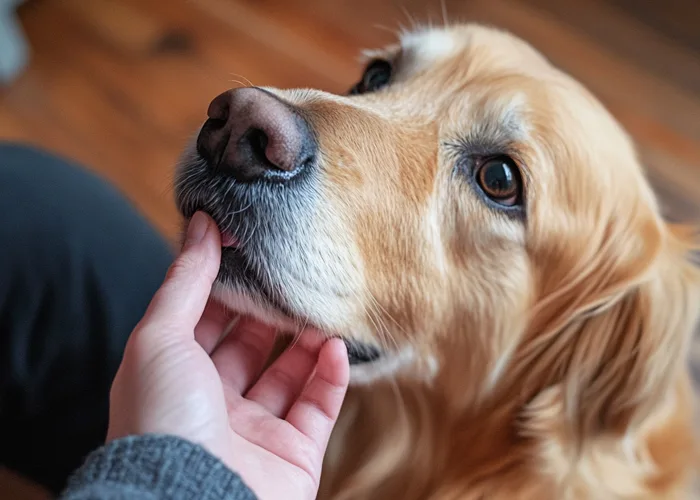How a Dog’s Internal Clock Works

Service dogs can be trained to remind you when to take medication, perform a scheduled task to keep you moving forward, or other time-sensitive functions. Since they cannot read time like humans, how does their “internal clock” know when you need to do something? That’s where their “superpowers” come into play.
In short, the answer is below, but keep reading to learn the science behind their ability to tell time and how the training works.
A service dog’s internal clock is able to tell time not by reading a clock but instead by using olfactory and auditory signals. A person or object gives off these signals, which let the dogs know when it is time to take medication, how to locate a person when their owner falls sick, when a caretaker is arriving, or perform other tasks and duties on schedule. Your service dog’s clock is powered by their olfactory and auditory senses combined with associative learning.
Medication Reminders, Detecting Mental Health Issues and Sickness
A dog knows when it is time for you to take your medication through its olfactory system (sense of smell), as it can detect when your body has lower levels running through it, including faint odor molecules. The scents they detect may include metabolic shifts and sweat. This is a bit different from knowing when you’re sick or might be getting sick in that your body language will change in addition to secreting a different scent, like sweat.
For example, this study shows that some dogs can detect when a person with hypoglycemia (T1D) is running low. This study, with only a few dogs, shows about a 50% accuracy in dogs trained on sweat samples, but it was inconclusive. Many other studies and medical professionals say otherwise, like this article from WebMD.
To train for medical issues like diabetes, seizures, and others, dogs are given swabs with healthy and unhealthy smells. The swabs can contain saliva, sweat, and other human secretions. When the dog is presented with “unhealthy” smells, they’re trained to perform a task like fetching your pill box or rubbing against you to let you know you’re running low.

When a Caretaker is Arriving
If you have a nurse, therapist, or other person who comes to assist you at scheduled times, your dog does not know that they are on the clock. Instead, they can use their auditory systems (sense of sound) to remember specific noises like a larger or smaller car, specific key chains clanking, and noises associated with the person.
Even if the person is across the street, a dog’s ears can pick up on it. Combined with memories or thoughts like being told they’re a “good boy or girl” with pets or “given treats,” it can trigger them to get excited as something positive is coming.
Dr. Susan Hazel of the University of Adelaide School of Veterinary Medicine shares that dogs can hear some noises, especially at higher frequencies, up to 1 kilometer away through their 12 ear muscles, which can be moved independently. Humans can hear roughly 20,000 Hz, and dogs can hear up to 45,000 Hz.
There are multiple ways to train a service dog on sounds. If the human gets hurt or needs help, the service dog can be trained to find specific people who can assist. Other times, the dog could detect there will be a guest so the human can prepare for a visitor, whether it is a caretaker or a surprise visit from a friend. This is especially helpful for a person who suffers from anxiety and agoraphobia and needs the heads-up.
Time for a Daily Task or Scheduled Routine
This is where things get interesting. We all know about dogs’ heightened senses of smell and hearing, but dogs also have Circadian Rhythms, just like humans. These internal clocks respond to the amount of light, temperature, and other external stimuli that make us respond to natural instincts.
Your dog’s circadian rhythms can combine with their senses and associative learning to have their own routine based on your routine. They may also develop a behavior pattern based on yours, and as your circadian rhythms change, theirs do, too. This is how service dogs will begin training to help you do daily tasks on time, even though they have no actual sense of time as we humans do.
Your dog may hear your alarm clock or coffee pot start if it is on a timer and associate that with it being time for your medication. Once they have this behavior, you can add training to retrieve your pill box.
The same goes for hearing specific sounds. For example, if you make a smoothie before work, your dog will know it is time to help you prepare as you’re about to leave. If heading to work typically causes anxiety or OCD issues, and your psychiatric service dog is trained to help you through stressful situations, you can use your morning routine to help them be ready to perform a necessary service.
Dogs cannot tell time like humans, but biologically, they do have a concept of time. They also have learned behaviors and associations that work hand-in-hand with their senses. By knowing how these work, trainers can help dogs learn specific behaviors so they can become valuable service dogs.
About the Author: The writing team at Service Dog Certifications is made up of folks who really know their stuff when it comes to disability laws and assistance animals. Many of our writers and editors have service dogs themselves and share insights from their own experiences. All of us have a passion for disability rights and animals.
Related Articles

Hipster Dogs: Trendy Pups, Beards, and Beanies
From PBRs to beanie caps, and from plastic sunglasses to “pawsome” music, hipster dogs have taken the world by storm — and there’s no turning back. Because, let’s face it, these little guys and gals were rocking the style before it was cool — not that they would care what’s cool, though. For a “pawsitevly” […]

Read More

How Dogs Can Calm Anxiety
A person suffering from anxiety attacks experience many risks, and it’s one of the reasons why it’s prudent to consider having a service dog or emotional support animal as a companion. The animal can keep the environment safer for the individual and below are some of the ways a dogs can calm anxiety: 1) Dogs […]

Read More

Can Cats Be Service Animals?
Having a cat brings the same positive effects as dogs. These pets can be equally beneficial to a person’s health. Experts have proven that cat owners are less likely to have a health emergency, such as a heart attack, with their feline companion around and cats have also been proven to help alleviate sleeping disorders, […]

Read More